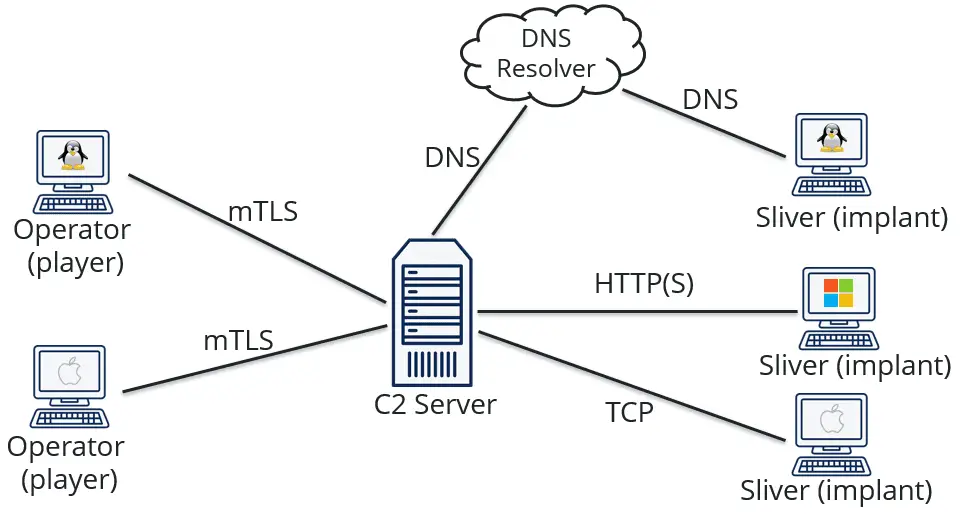sliver v1.5.41 releases: general purpose cross-platform implant framework

Sliver
Sliver is a Command and Control (C2) system made for penetration testers, red teams, and advanced persistent threats. It generates implants (slivers) that can run on virtually every architecture out there, and securely manage these connections through a central server. Sliver supports multiple callback protocols including DNS, TCP, and HTTP(S) to make egress simple, even when those pesky blue teams block your domains. You can even have multiple operators (players) simultaneously commanding your sliver army.
It supports proxy-aware C2 over both HTTP and HTTPS, however, since Sliver does not rely upon the SSL/TLS layer for security these protocols are considered somewhat synonymous.
The server, client, and implant all support MacOS, Windows, and Linux (and possibly every Golang compiler target but we’ve not tested them all).
Features
- Dynamic code generation
- Compile-time obfuscation
- Multiplayer-mode
- Staged and Stageless payloads
- Procedurally generated C2 over HTTP(S)
- DNS canary blue team detection
- Secure C2 over mTLS, WireGuard, HTTP(S), and DNS
- Fully scriptable using JavaScript/TypeScript or Python
- Windows process migration, process injection, user token manipulation, etc.
- Let’s Encrypt integration
- In-memory .NET assembly execution
- COFF/BOF in-memory loader
- TCP and named pipe pivots
- Much more!
Architecture
There are four major components to the Sliver ecosystem:
- Server Console – The server console is the main interface, which is started when you run the
sliver-serverexecutable. The server console is a superset of the client console. All code is shared between the client/server consoles except server-specific commands related to client (i.e., operator) management. The server console talks over an in-memory gRPC interface to the server. - Sliver Server – The Sliver server is also part of the
sliver-serverexecutable and manages the internal database, starts/stops network listeners (such as C2 listeners, though there are other types). The main interface used to interact with the server is the gRPC interface, thru which all functionality is implemented. By default the server will only start an in-memory gRPC listener that can only be communicated with from the server console. However, the gRPC interface can also be exposed to the network (i.e., multiplayer mode) over mutual TLS (mTLS). - Sliver Client – The client console is the primary user interface that is used to interact with the Sliver server. Note that most of the code in the server console is actually the client console. The client console can also be compiled into a separate client binary file
sliver-client, which is generally used to connect to the “mutliplayer” gRPC network listener. - Implant – The implant is the actual malicious code run on the target system you want remote access to.
By implementing all functionality over this gRPC interface, and only differing the in-memory/mTLS connection types the client code doesn’t “know” if it’s running in the server console or the client console. Due to this, a single command implementation will work in both the server console and over the network in multiplayer mode.
Install && Use
Copyright (C) 2019 BishopFox





